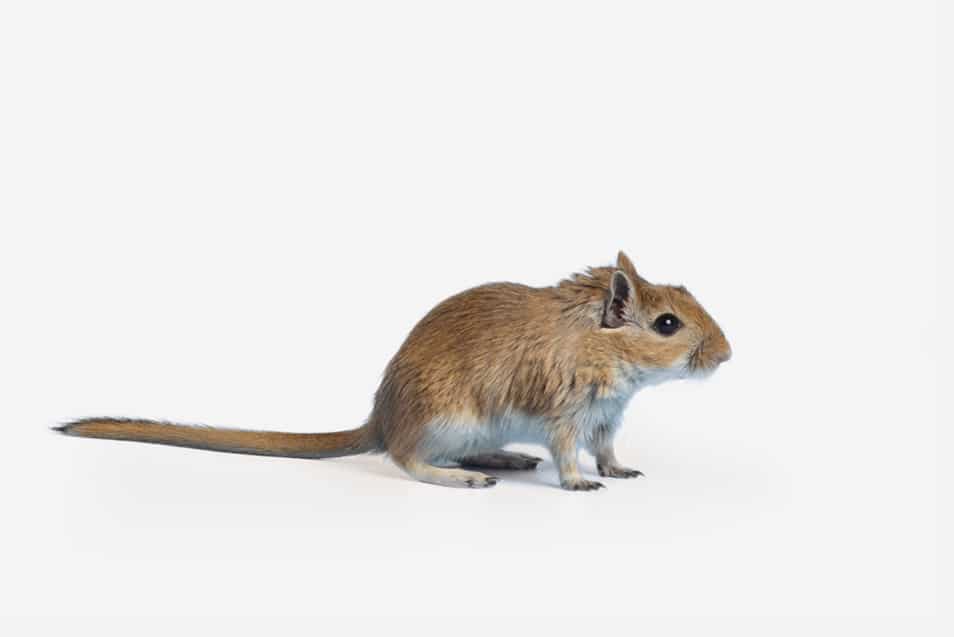GERBIL Meriones Unguiculatus


Model characteristics
Type:
Outbred gerbil
Strain name:
RjTub:MON
Origin:
Tumblebrook Farm (USA) - 1984
Colour and related genotype:
Agouti animal with dark eyes
Breeding:
Difficult to rear, easy to handle
Description of our model and application areas
The Mongolian gerbil (Meriones unguiculatus) is a small rodent whose adult weight can reach 70 to 100g. It belongs to Cricetidae family and originates in the steppes of northeastern China and Mongolia. It was introduced to Tumblebrook Farm by Dr. SCHWENTKER in 1954.
It’s a reference model in epilepsy and cerebral ischemia studies and the gerbil is also a choice model in studies of radiation and experimental atherosclerosis. The effects of hormones on the sebaceous glands (gerbils’ sebaceous gland pads are under the control of androgens and are easily observable) and its ability to thermoregulate are examples of the gerbil’s specific characteristics that can be used in specific fields of research.
Gerbils are also unique among lab animals for their resistance to dehydration; it only needs 4 mL of water per day. It also concurrently produces a very small amount of urine .
Main application and research fields
Growth curve
The growth curve represents an average which reflects the weight variation of the strain measured between 21 and 84 days for males and females.


Reproductive data
Monogamous mating according Robertson System


You may also be interested in these models
Warning: Illegal string offset 'title' in /home/deca3005/janvier-labs.com/html/wp-content/themes/oceanwp-child-theme-master/single-fiche_produit.php on line 921
Voir tous les modèles de recherche




